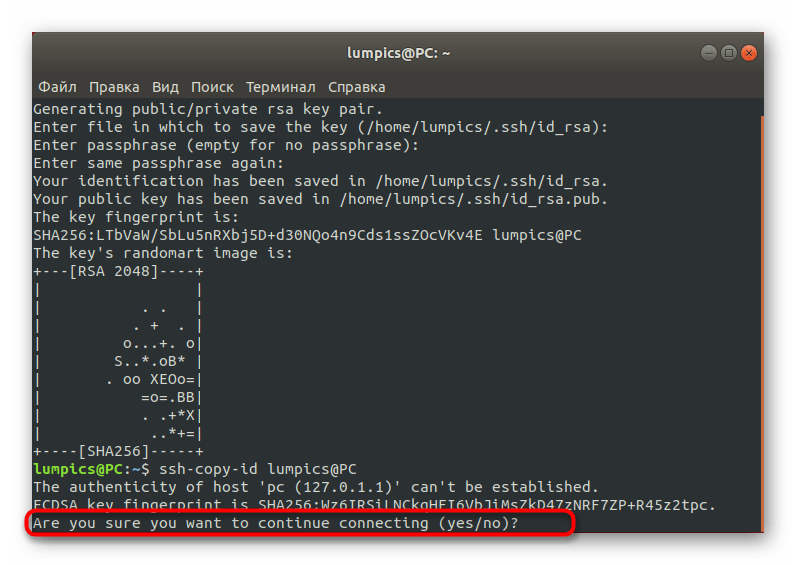

- #Ssh copy id with yes and password how to
- #Ssh copy id with yes and password install
- #Ssh copy id with yes and password password
Then you will be prompted for your password on the server, just like a regular SSH connection. Replace user and server with username and host, respectively. Once available, you can use this tool like this: $ ssh-copy-id -i ~/.ssh/id_rsa.pub
#Ssh copy id with yes and password install
If it is not installed, install it using package manager of choice or proceed to the second method. The easiest one is using ssh-copy-id tool. Once done, your public key will be saved in ~/.ssh/id_rsa.pub, and you can proceed to the next step. Leave empty for no password or enter one. This will help you achieve highest security as cost of convenience and automation. This can be used to protect the private key with a password. ssh-keygen will ask you a number of things: If not, just install it using package manager of choice. Do this by running: $ ssh-keygenĭepending on your distro, this tool may or may not be included. If not, or you see an error, you will need to generate a key pair. If in the output you see any id_rsa.pub files, skip to the next step. Before we do that, let’s first make sure you do not overwrite any existing ones: $ ls ~/.ssh
#Ssh copy id with yes and password how to
How to set up passwordless SSH?įirstly, you have to create a public/private key pair. So, in the end, you are still using a password, just a more sophisticated one (more on that later). Server ensures the message is decrypted correctly, and, if it is, authenticates the user.Client decrypts the message using its private key and sends it back.Encrypt a message using your public key and send it to client.So, if the SSH server has your public key saved (this is important), it can authenticate you like this: This principle is used in many applications around us, including HTTPS, FTPS, PGP (email encryption) and many others. Sounds cool, isn’t it? Moreover, it is not limited to SSH. In other words, anyone with your public key can send you encrypted messages that only you will be able to read.

Using the public key, you can encrypt (or sign) any message, and it will only be possible to decrypt it using the private key. What you need to understand, though, is that these pairs have a unique feature. Why do you need these pairs though? I will not go into advanced mathematics here, and it is not necessary. Thus, your public key is available for everyone and is stored both on client and server. Think of it as a human fingerprint: a fingerprint can be used to (somewhat) uniquely identify humans, but you cannot recreate a human from only his fingerprint. That is, you can generate a unique public key from the private key, but cannot get the private key from a public key, this is a one-way process.

public key is another stream of bits, and it is derivative of private key.

private key is kept secret and never leaves the client (your PC). A private key is a very long, random stream of bits (2048 is used most often). So how does it work?įirstly, you have to understand what public/private keys are. Fair to say, nothing is going to be secure when we get quantum computers, so let’s just ignore it for now. Passwordless, on the other hand, is immune to all kinds of attacks, as long as your own system is not compromised or your attackers have a quantum computer. In practice, it is really easy to leak the password, forget it, use it elsewhere, or use a common one that can easily be hacked. If you want your scripts (deployment, maintenance, etc.) to perform any SSH-related tasks, you will need this enabled.īut you might be wondering, how can it ever be secure? Surely, nothing can protect you more than a long password? In theory, yes. But it is not just convenience and security: one task that absolutely needs it is automation. Using it, you are able to just run: :$ ssh Obviously, it is secure, but what if I told you that you can make it even more secure by disabling the password? Passwordless? SSH (Secure SHell) is a protocol that is used for remote administration of Linux systems.


 0 kommentar(er)
0 kommentar(er)
